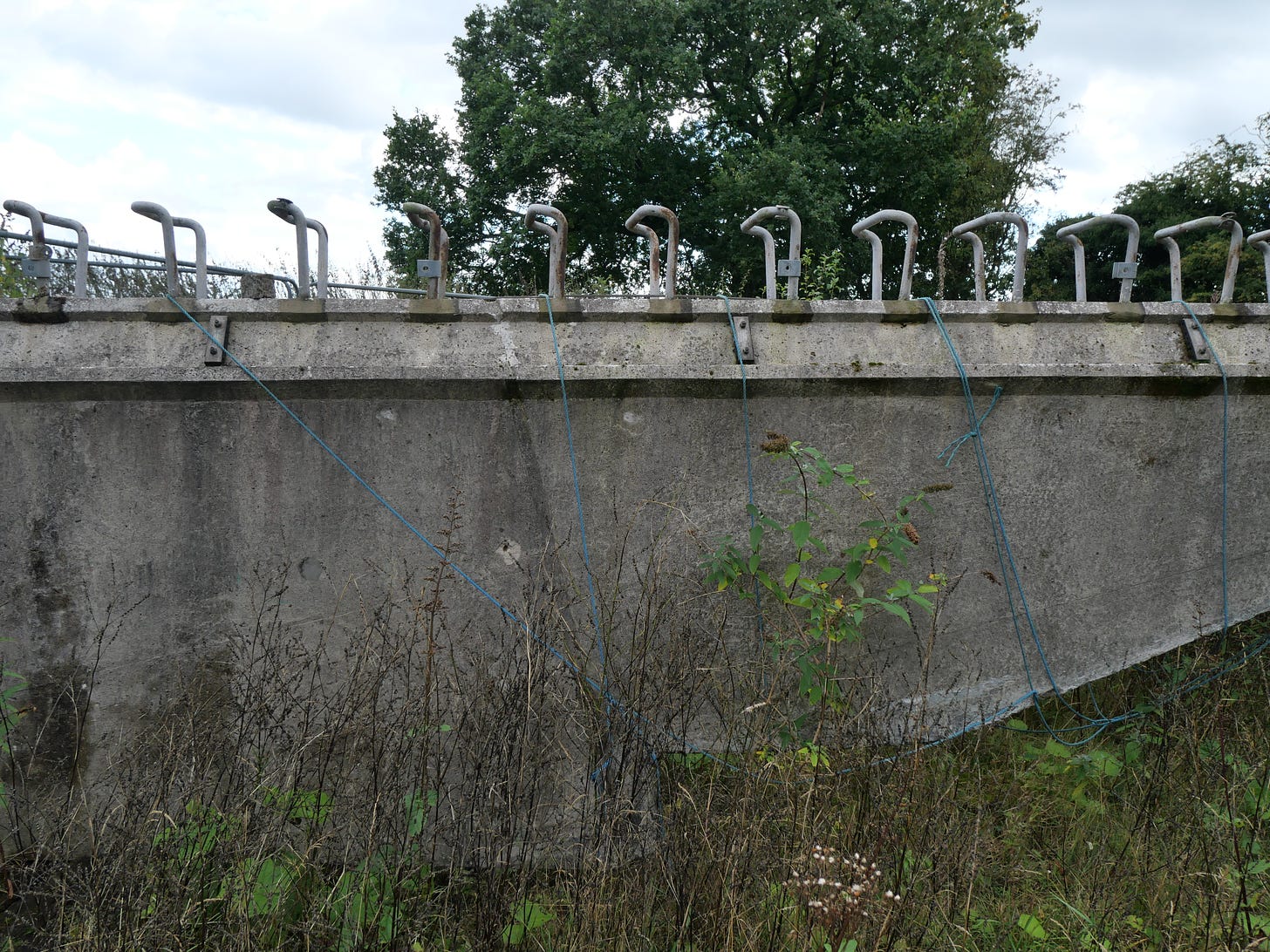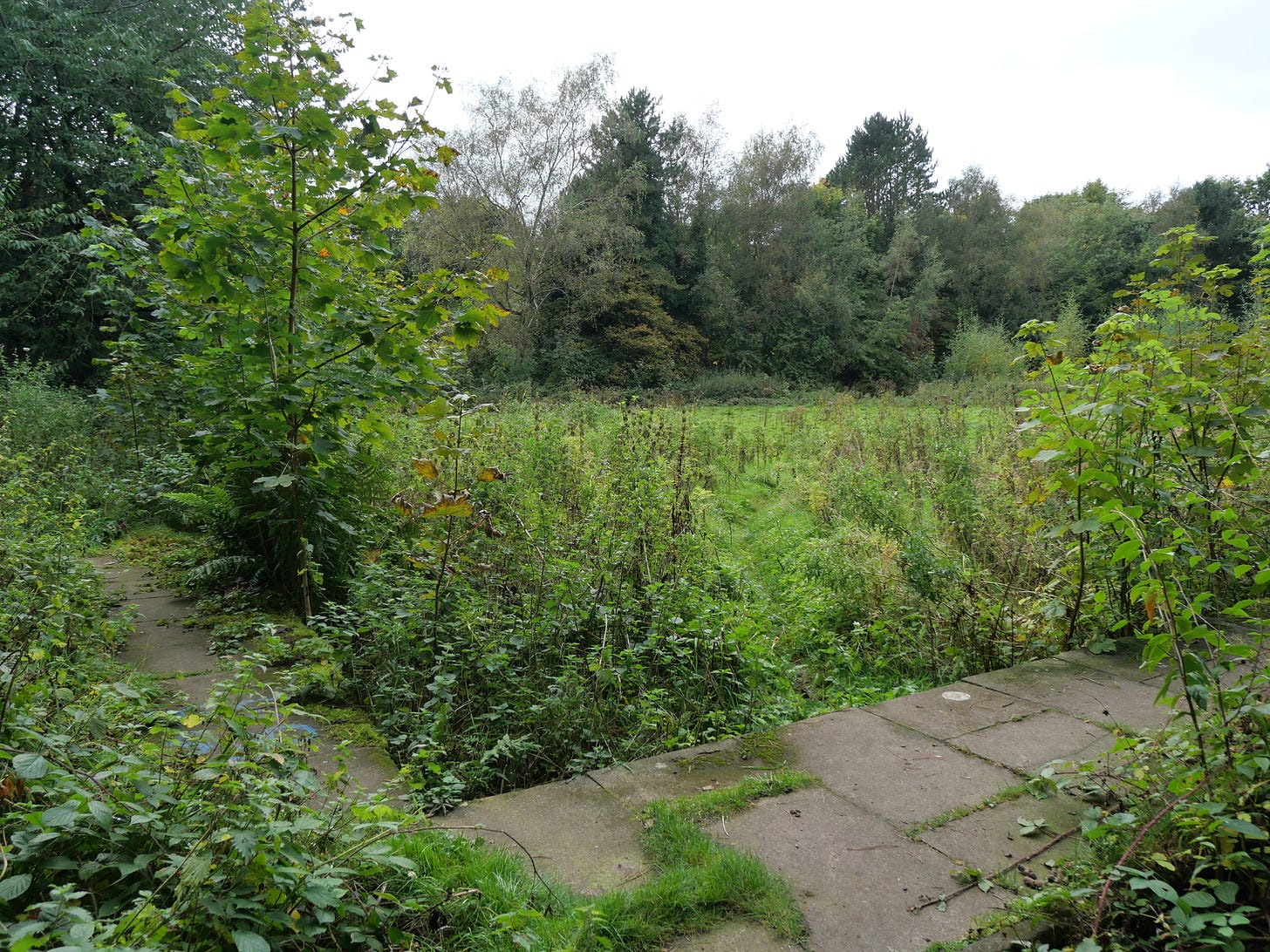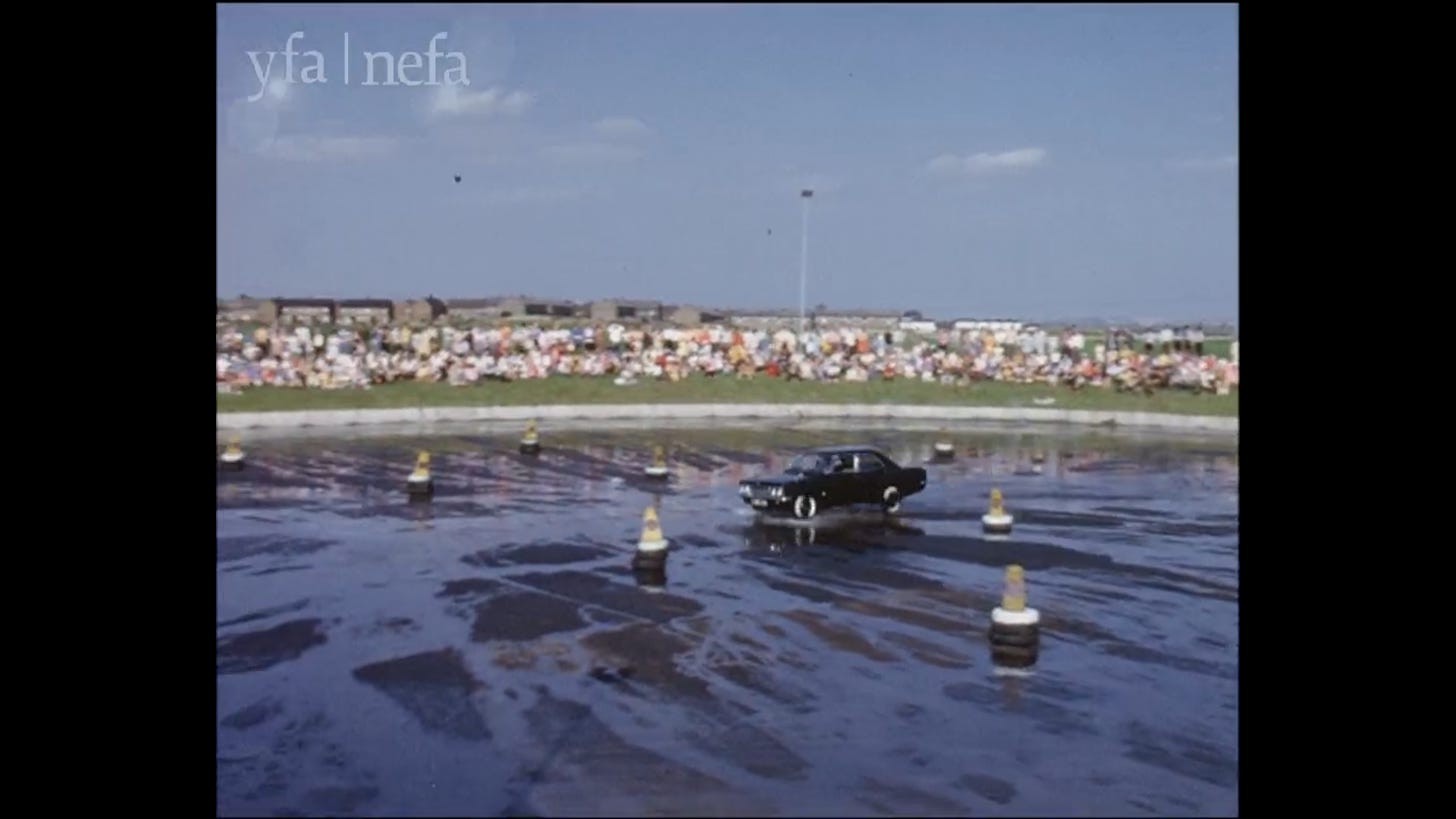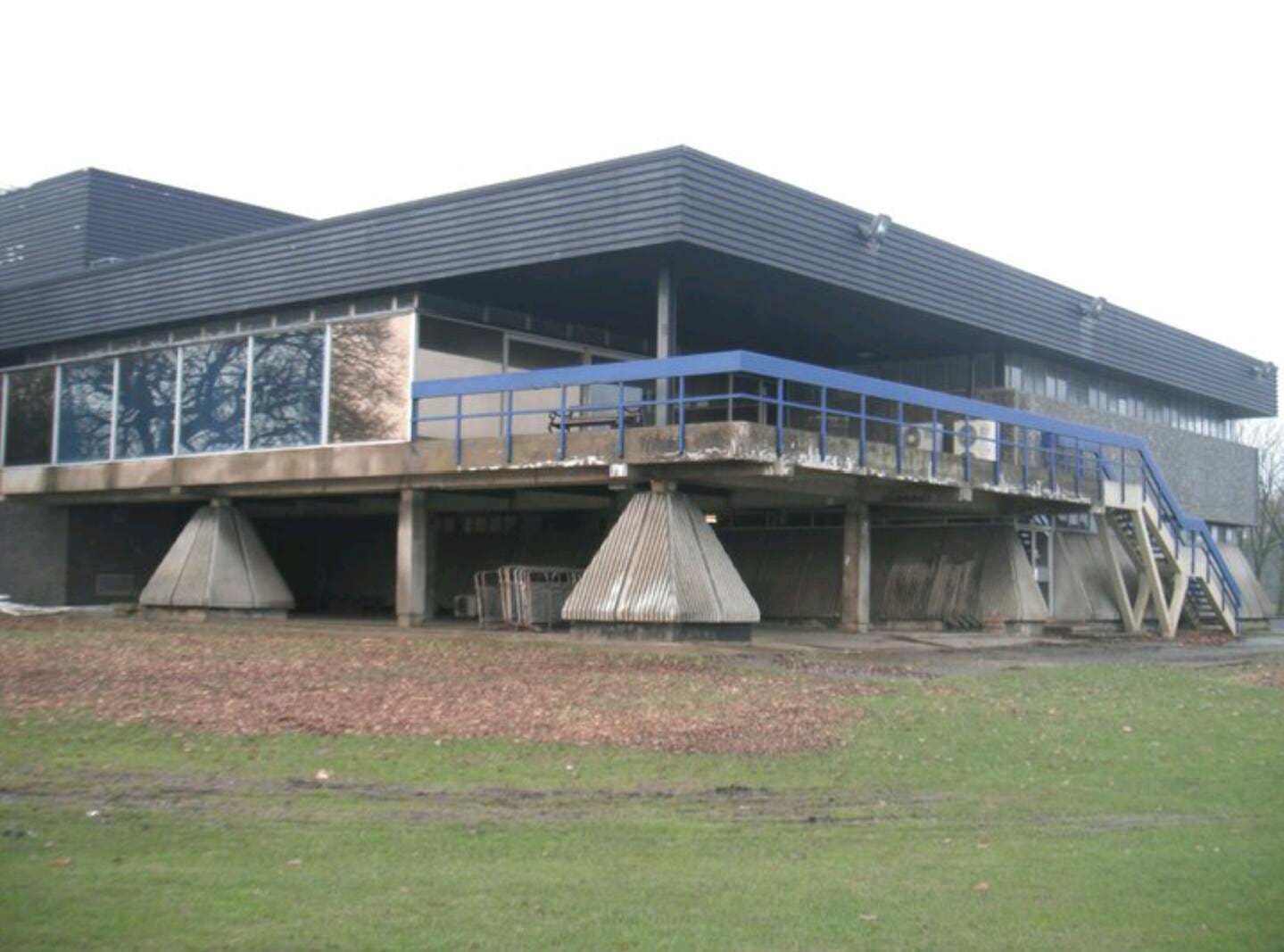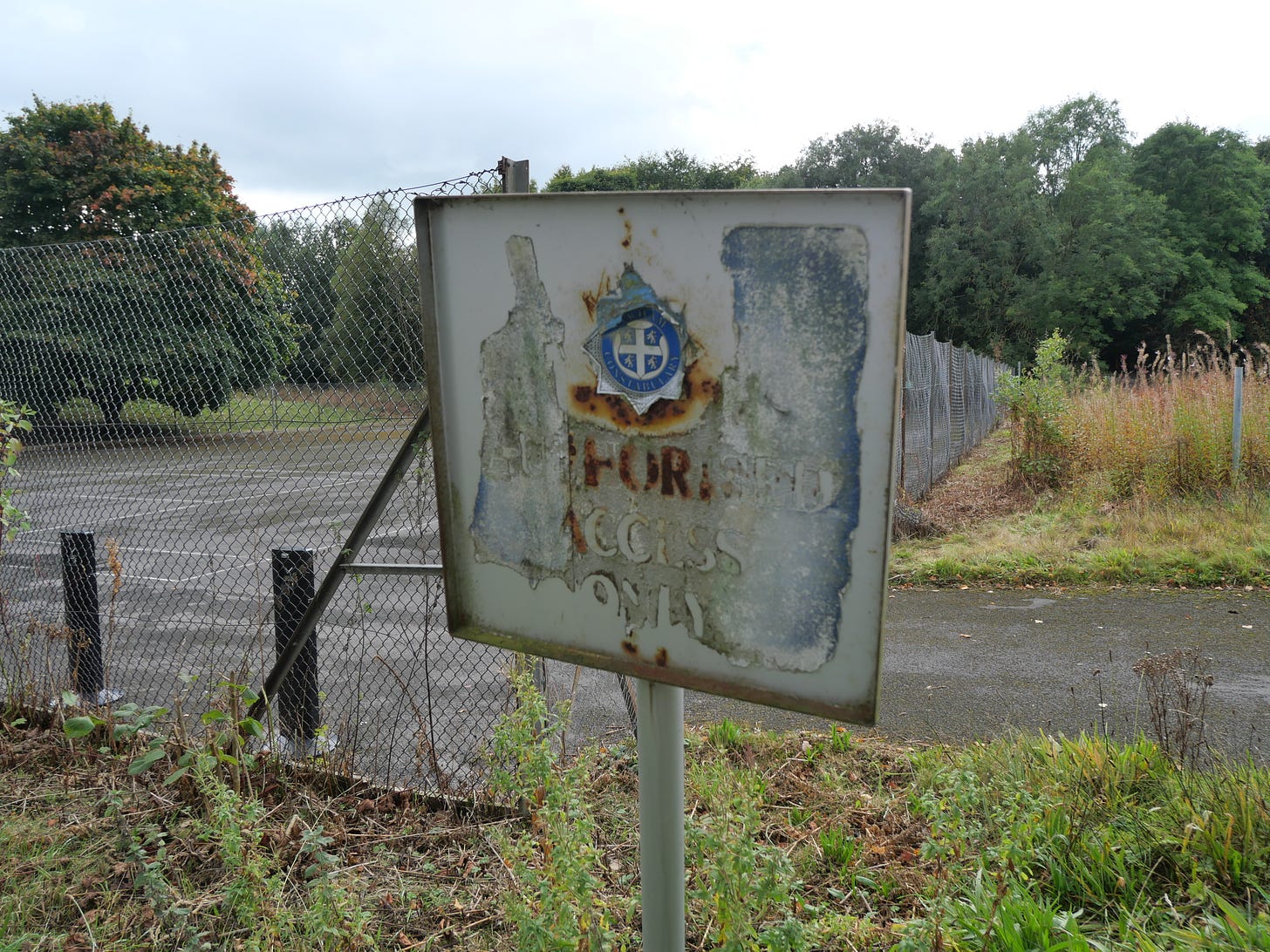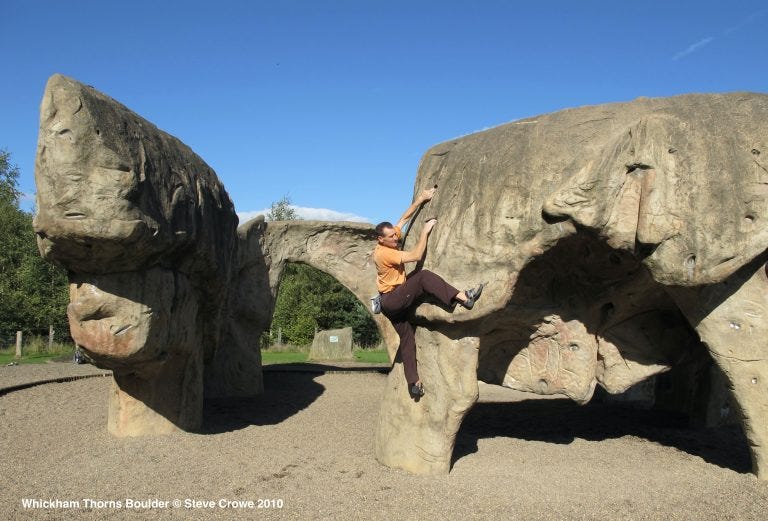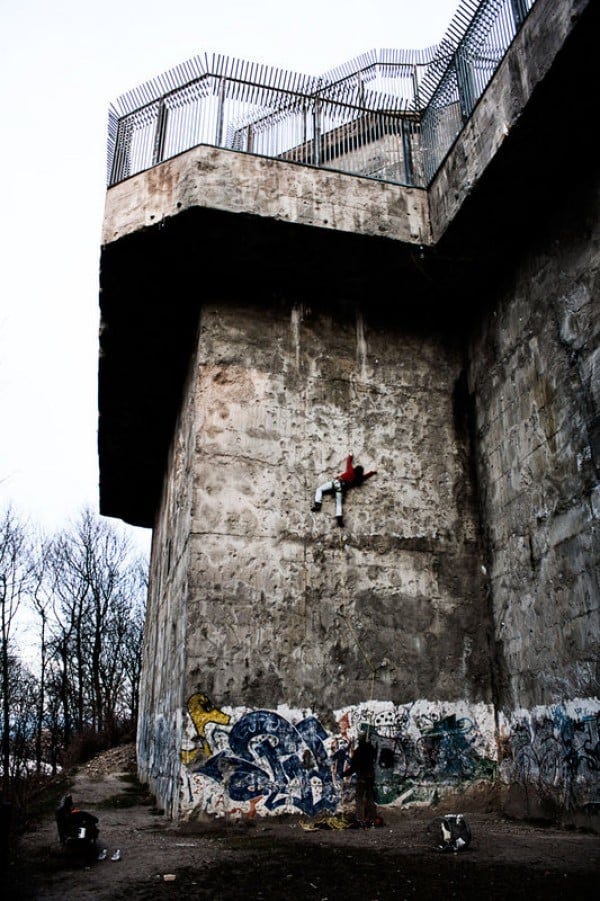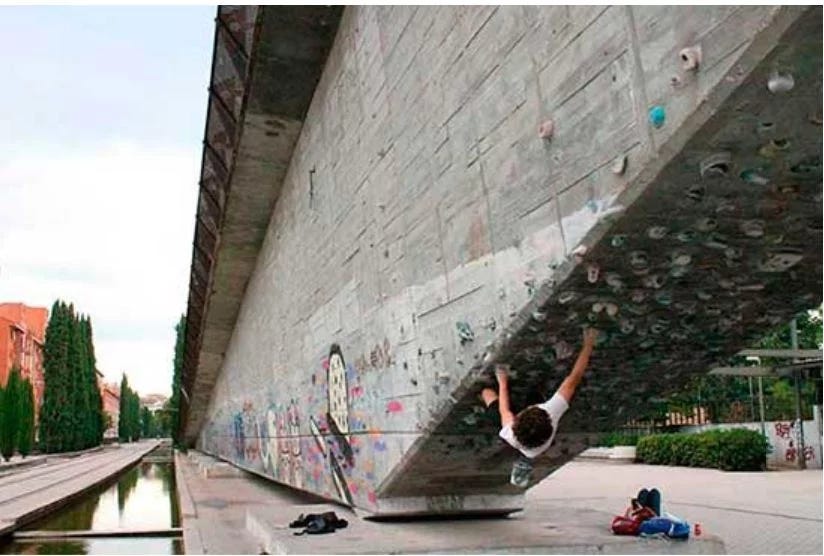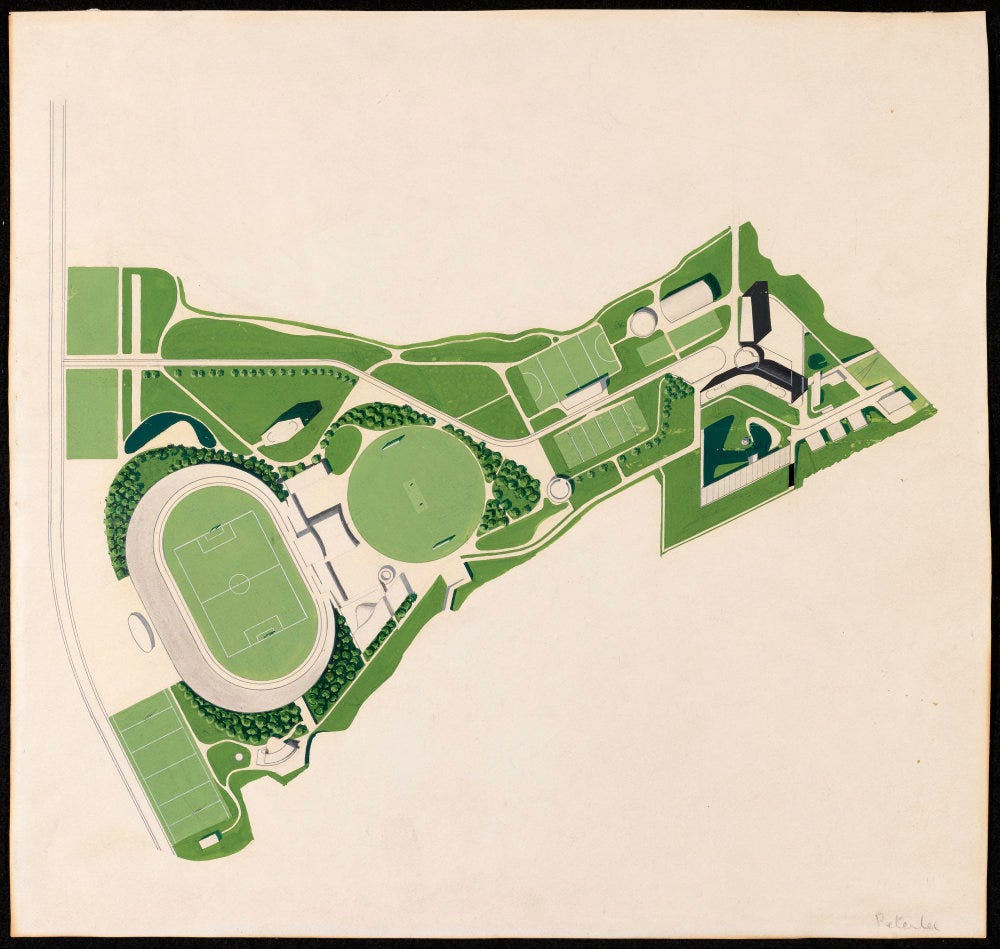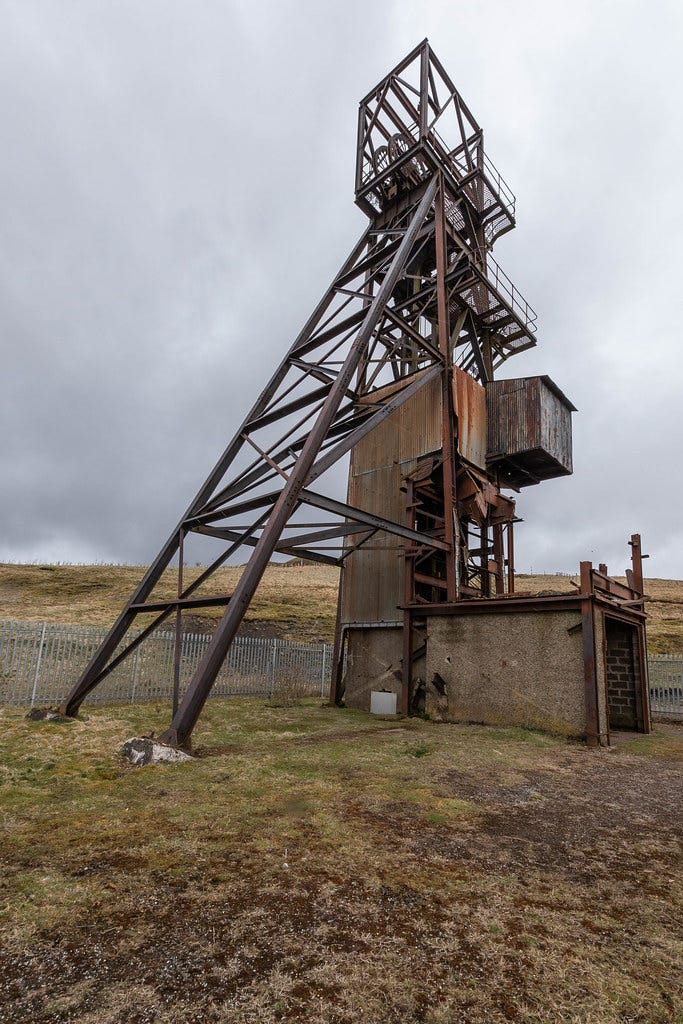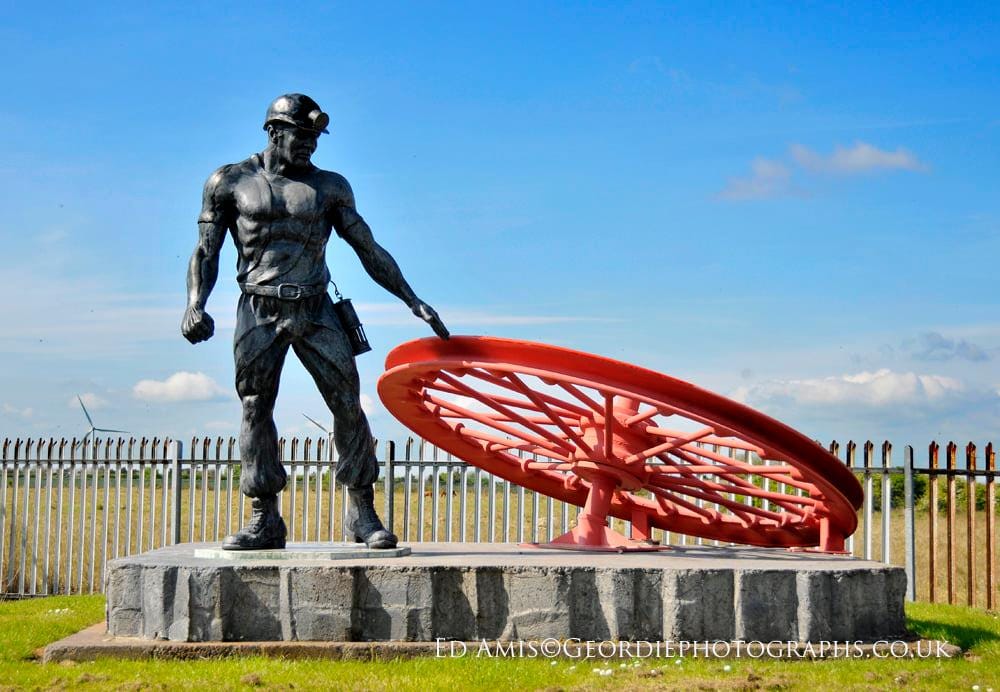Part one of this series described the cultural relevance of the mighty police mast and the deadlock between the police and the council over its future. This article offers a solution that both parties, as well as the community, would benefit from: re-using the concrete for an outdoor public climbing wall next to the police headquarters. Hear me out.
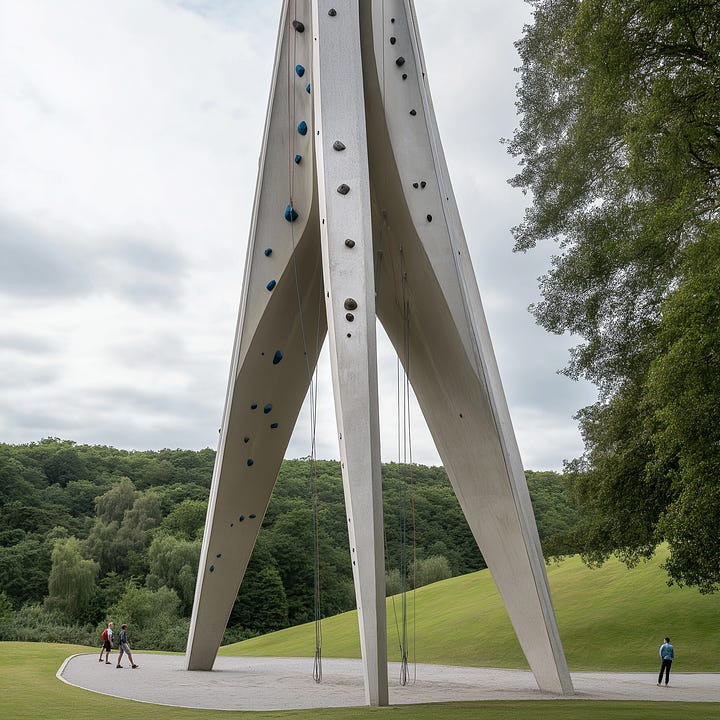
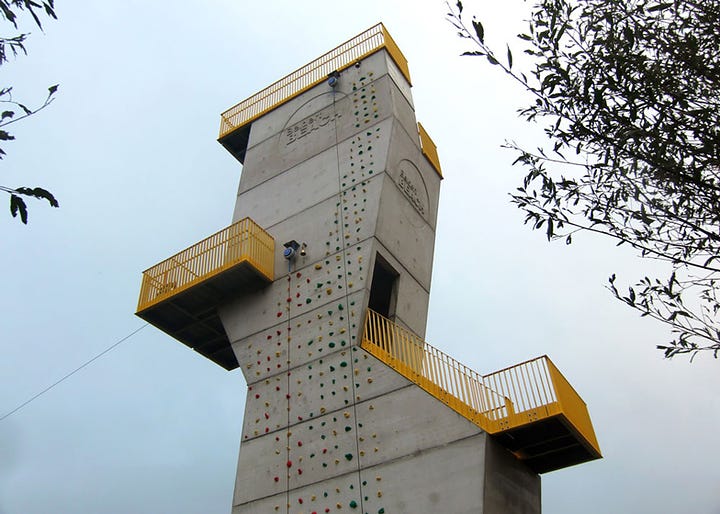
Aykley Heads, the site of successive police headquarters buildings and home of the mast, was once a sprawling leisure facility with a swimming pool and gym subsidised for the local community and those who worked at the headquarters. There were two bowls greens, basketball courts and an often overgrown golf course where elderly dog owners would thwack balls around while their collies retrieved them. My grandad took me for a walk there once and told me which tufted bits of grass disguised the legacy golf holes to aim for. The greater headquarters site that was comprised of all these facilities felt open, even notionally socialist in comparison to the fortress-like modern headquarters and new-build flats.
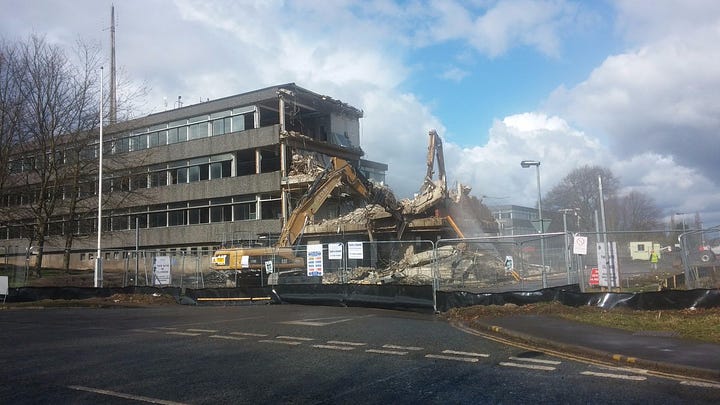
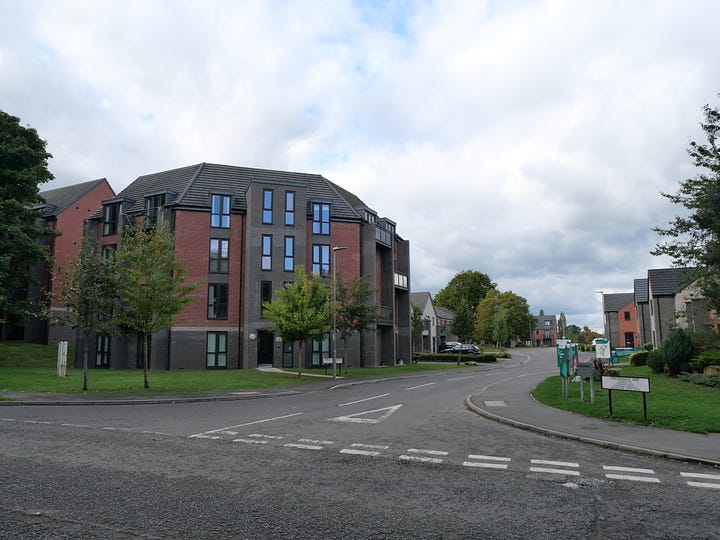
The area is now slowly returning itself to nature. Bowls greens are left to grow into eerily flat squares of wilderness, which I enjoy during a slow walk around the remnants of facilities that welcomed me in the past. As a child, stories from the school trip to Aykley Heads would be passed down from the year above. The pictures from the opening day in the 60’s where the community was welcomed show thousands of people in attendance. They gather in the picture below, as we did on our school trip, around the ‘skid pan’: a waterlogged concrete circle for displays of evasive driving manoeuvres. This was just part of a trip that contributed to a general sense that I was welcomed in the grounds of the headquarters and the surrounding area. In some ways the site is more beautiful, but there is a mournful nostalgia as I rediscover the ruins of a very different kind of space.
There are scarcely any pictures or memories of the leisure facilities online. They served us so much more than our ‘redundant’ concrete mast and yet they are so much easier to condemn and to lose. I have dozens of unremarkable memories of the Aykley Heads site, as we all do. Childhood should just be a series of unremarkable events. These ordinary places remain part of our stories, like the inexplicably folded corners marking important chapters of our lives.
I'm left feeling desperately sad, bereft of these spaces that we once took for granted and now can barely comprehend existing. We are so poisoned by the mindset of austerity that spending £250,000 per year to subsidise the leisure centre for the local community does not make sense to us. Yet it made sense in the 1960’s when it was built, until 2010 when it was demolished.
“At a time of severe financial constraints to continue to use this amount of funding to subsidise a facility used not only by constabulary staff, but also people from other organisations, would be disproportionate compared to the number of police officers and staff using it.”
“We believe any funding which is available to promote and improve health and welfare should be used for the benefit of all staff, not just those who are members of the centre.”
-Durham Police Spokesperson, 2010
In a heartbreaking allegory for how our modern design choices isolate us, the police-sponsored basketball court sits abandoned while the claustrophobic ‘Aykley Woods’ estate across the road stimulates competitive hoop purchases.
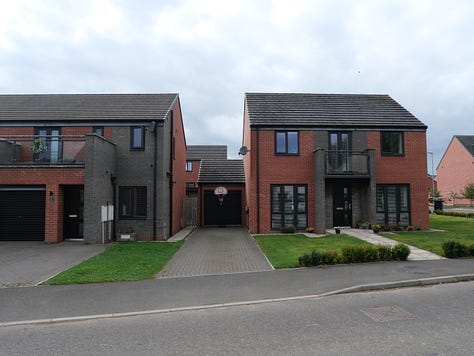
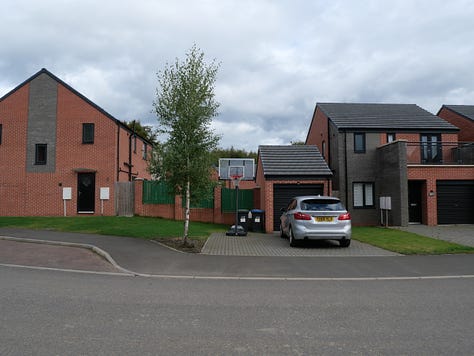
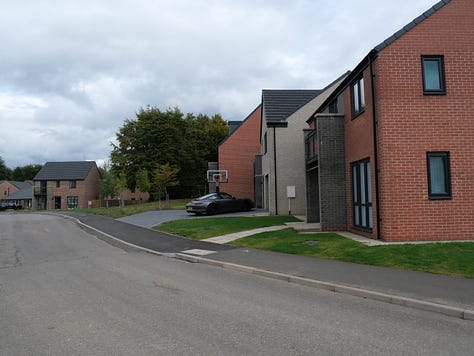
Imagine hearing the nearby poing-poing-poing of a dribbled basketball and the dull thuds of a backboard echoing around your cramped brick-warren, as you play in solitude too. Nearby, tufts of grass prove themselves in fault lines that run through the faded markings of the communal basketball court. With the hoops long since removed, nobody can ever win. If we lose these spaces, do we ever get them back?
Climbing
Rock climbing began as an upper-class pursuit, where those with the disposable time and income would test gear for alpine trips during micro-expeditions to small craggy outcrops. With the advent of affordable transport, more people were able to access the hills and many of these small crags became challenges in their own right. In the present day, climbing has devolved into a multi-disciplinary sport, from high altitude ice climbing to bouldering—climbing just a few feet off the ground. Initial climbing walls were deliciously unsafe and unusual. These scab-producing concrete playgrounds were fairly dissimilar to actual rock, built in the time of brutalism and simple by necessity.
As climbing walls matured, they first began to replicate natural rock with fixed concrete features, until the commercial application of bolt-on holds, which can be moved to alter routes indefinitely. As climbing became increasingly popular, more facilities and technological advancements were made, including the creation of communal outdoor climbing spaces. Whickham Thorns Boulder, in nearby Gateshead, was built in 1998.
Climbing itself has changed from a rugged adventure sport to many neurodivergent people’s primary way of socialising. As young people increasingly forego pubs and bus shelters, the climbing wall offers an alternative social space. With all the health benefits of a gym, climbing walls have a more social atmosphere, routes can be discussed and worked on together. It is one of the rare places that different demographics can meet; children climb instinctively from a young age alongside those from the first generation of ‘climbers’ in the 80's. Ultimately, practice at these artificial walls can diversify into wonderful adventures in nature.
The spread of climbing culture has meant that experiences have been sought in the most inventive of spaces, evoking memories of the early climbing walls that repurposed existing features. WWII bunkers in Berlin host hundreds of routes, as people climb through the fragmented concrete, stopping just before the barbed wire. In Madrid, climbing holds are fixed onto underutilised niches in the concrete criss-cross and ‘Rocodromo Libres’ exist throughout the city.
In the ‘Playful Cities Design Guide’ published by Arup Group in 2023, they promote climbing walls as part of embedding playful design into cities.
“Design for play has the power to generate diverse experiences of the city that may lead to new ways of learning and developing skills, of living in the urban and natural environment, and of cultivating a greater sense of place and community interactions. Also, playful spaces can enable pro-social behaviours that yield substantial benefits for people of all ages. These social and environmental benefits are of paramount importance in the age of climate change and social unrest.”
“A climbing wall can also promote emotional skills by allowing users to process feelings of frustration while completing a challenging task by talking with friends and family.”
-Arup Group
In the initial designs for Peterlee by Berthold Lubetkin, a communal climbing wall was featured in an extensive leisure complex reminiscent of the size and shape of the early Aykley Heads site. As we know from the previous article, bureaucratic disagreements led to Lubetkin abandoning the project, not before giving us a glimpse of ideas that could have made Peterlee a very different place today.
Monuments
While my favourite monuments to our industrial past are the honest and unaltered in situ machinery, pit wheels are often repurposed into kitsch memorials to a lost sense of community, as if these emblems of exploiting the land and our people would resonate with a northern generation that simply cannot remember cohesion. All I have known is austerity, delivered by successive governments and continual crises. Each one eroding a culture and community that feels so sparse to begin with.
Should Ove’s mast be re-erected with the kind of begrudging collaboration that dismantled Peterlee's early promise? Another monument to what we never had and what we have lost? If this structure is repurposed as a climbing wall, the police and council can act to serve their community. Arup Group can fulfil their commitment to Ove’s ideals by helping to find a solution to this bureaucratic impasse. Aykley Heads can once again be a place that people feel welcomed and there will be some synchronicity in the fact that I would get to finally climb the mast.




